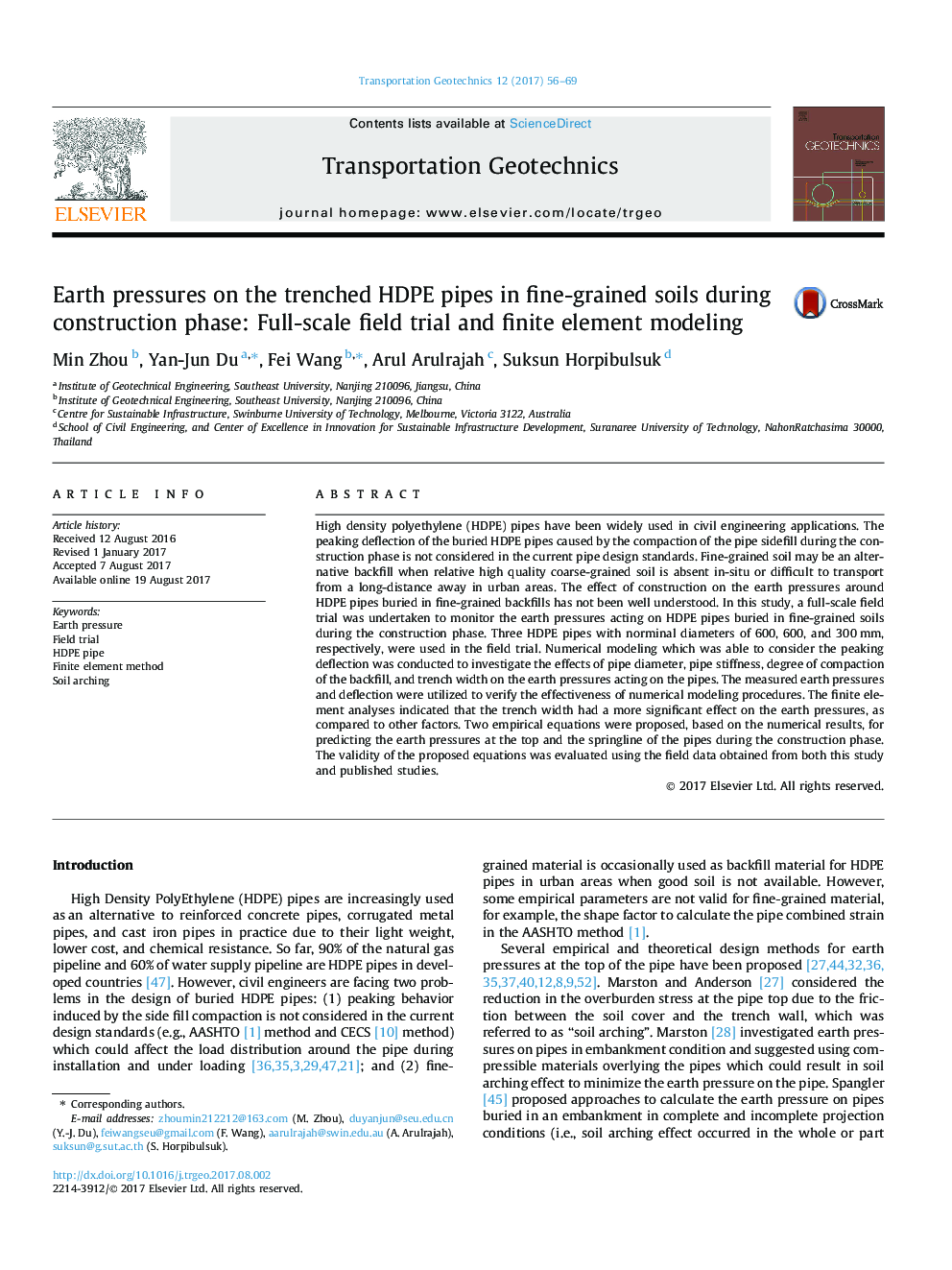| Article ID | Journal | Published Year | Pages | File Type |
|---|---|---|---|---|
| 4928768 | Transportation Geotechnics | 2017 | 14 Pages |
High density polyethylene (HDPE) pipes have been widely used in civil engineering applications. The peaking deflection of the buried HDPE pipes caused by the compaction of the pipe sidefill during the construction phase is not considered in the current pipe design standards. Fine-grained soil may be an alternative backfill when relative high quality coarse-grained soil is absent in-situ or difficult to transport from a long-distance away in urban areas. The effect of construction on the earth pressures around HDPE pipes buried in fine-grained backfills has not been well understood. In this study, a full-scale field trial was undertaken to monitor the earth pressures acting on HDPE pipes buried in fine-grained soils during the construction phase. Three HDPE pipes with norminal diameters of 600, 600, and 300Â mm, respectively, were used in the field trial. Numerical modeling which was able to consider the peaking deflection was conducted to investigate the effects of pipe diameter, pipe stiffness, degree of compaction of the backfill, and trench width on the earth pressures acting on the pipes. The measured earth pressures and deflection were utilized to verify the effectiveness of numerical modeling procedures. The finite element analyses indicated that the trench width had a more significant effect on the earth pressures, as compared to other factors. Two empirical equations were proposed, based on the numerical results, for predicting the earth pressures at the top and the springline of the pipes during the construction phase. The validity of the proposed equations was evaluated using the field data obtained from both this study and published studies.
